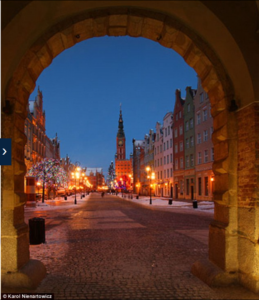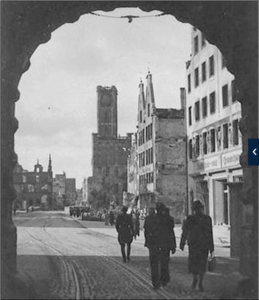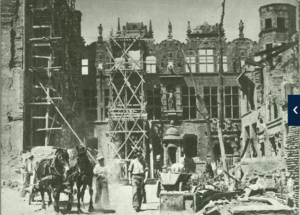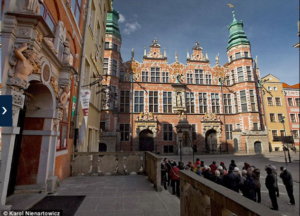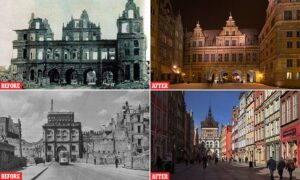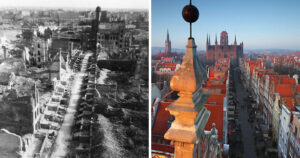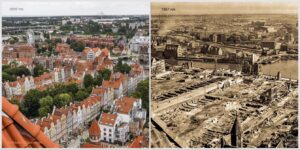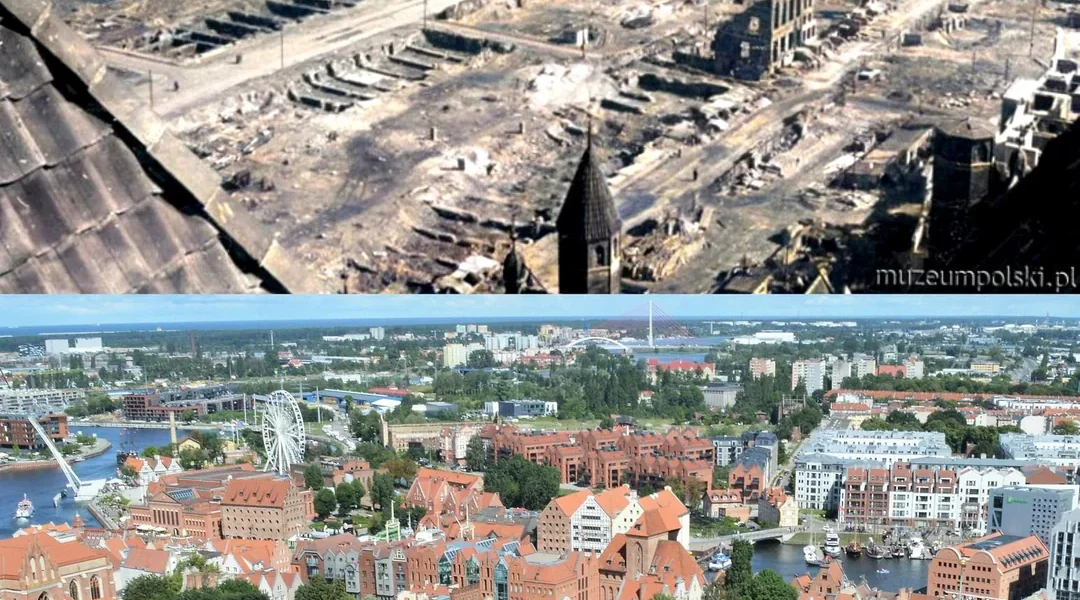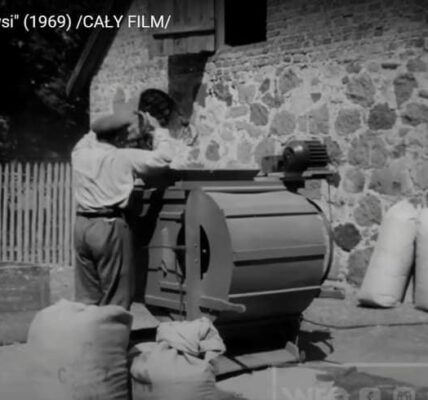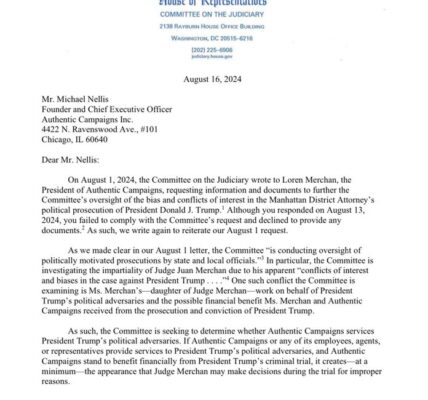Zniszczone budynki i ulice usłane gruzem to prawie wszystko, co pozostało z Gdańska po inwazji nazistowskich Niemiec w 1939 roku. Około 90 procent miasta zostało zrównane z ziemią, ale dzisiaj jest prawie nie do poznania. Zdjęcia zestawione obok siebie podkreślają, jak spektakularna była jego transformacja w piękne miasto.
Karol Nienartowicz, fotograf z Polski, zaczął robić zdjęcia w szóstym co do wielkości mieście kraju, kiedy przeprowadził się tam w 2013 roku. Fotograf zauważył, że miejskie krajobrazy różniły się od jego zwykłych tematów, ale projekt sprawił, że chciał zgłębiać ten obszar jeszcze bardziej. Jedno z jego zdjęć ukazuje Długi Targ pod Zieloną Bramą, a inne przedstawia Gdańską Akademię Sztuk Pięknych.
Po obejrzeniu zdjęć Gdańska wykonanych tuż po II wojnie światowej, Nienartowicz poczuł potrzebę pokazania efektów siedmiu dekad ciężkiej pracy. Wykonał nowe zdjęcia miejsc, które były fotografowane w latach 40. XX wieku, a wynik jest zdumiewający.
===============================================================================
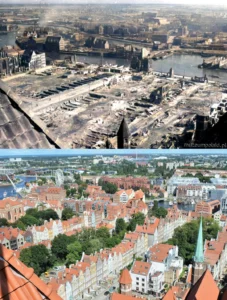
Gdańsk, one of Poland’s most beautiful and historically rich cities, holds a story like no other. The Old Town, with its medieval buildings, narrow cobblestone streets, and Gothic churches, was a beacon of culture and trade in Eastern Europe. Yet, the devastation it faced during World War II and the miraculous rebirth it experienced in the decades following is a testimony to human resilience, hope, and the unrelenting spirit of the Polish people.
The Ruins of War: A City Brought to Its Knees
In the late 1930s, Gdańsk was a point of tension between Germany and Poland. The city, then known as Danzig, was a Free City under the League of Nations. It was a melting pot of different cultures, drawing influences from the Germans, Poles, and other European communities. However, when World War II erupted in 1939, Gdańsk became one of the war’s first victims. German forces invaded Poland from the north, and the city was dragged into the brutal conflict. By the time the war ended in 1945, over 90% of Gdańsk’s Old Town was reduced to rubble.
Walking through the streets of Gdańsk in the immediate post-war years was like walking through a graveyard of memories. Once-bustling marketplaces were buried under heaps of bricks. The iconic St. Mary’s Church, one of the largest brick churches in the world, was severely damaged, its walls scarred by bullet holes and its windows shattered. Buildings that had stood since the Middle Ages were gone, replaced by silence and dust. The Motława River, which once shimmered with the lights of trade ships and merchants, flowed quietly past ruins, reflecting a city stripped of its past glory.
A Beacon of Hope: The Rebuilding Begins
In the late 1940s and early 1950s, Gdańsk’s restoration was not just a reconstruction of buildings; it was a reawakening of the spirit. Many doubted if the city could ever return to its former grandeur. The damage was overwhelming, and resources were scarce. Yet, the Polish people were determined. They were not just rebuilding a city; they were reclaiming a heritage, an identity stolen by war.
Architects, historians, and ordinary citizens came together to restore Gdańsk to its historical splendor. They chose to reconstruct the Old Town in the style it had before the war, using old photographs, paintings, and architectural plans to guide their work. Brick by brick, stone by stone, they breathed life back into the ruins. Each street, each building that rose from the ground, was a tribute to the city’s lost history and the dreams of its people.
One of the most touching symbols of this rebirth is St. Mary’s Church. Volunteers and craftsmen spent years piecing together its broken walls, replacing lost artifacts, and restoring its towering spires. When it reopened in 1955, it was more than just a church—it was a symbol of perseverance and faith. Similar efforts were seen all over the Old Town. The Main Town Hall, Artus Court, and the famed Green Gate were all painstakingly restored to their original beauty, standing today as living memories of what Gdańsk once was and what it fought to become again.
Gdańsk Today: A City of Resilience and Renewal
Today, Gdańsk’s Old Town is once again a vibrant hub of culture, history, and life. The streets, once filled with sorrow and despair, now echo with laughter, music, and the sounds of everyday life. The city’s blend of Gothic, Renaissance, and Baroque architecture—faithfully reconstructed—attracts visitors from around the world. Walking through the Old Town today, it’s almost impossible to believe that this same place was once a wasteland of destruction.
The Motława River sparkles once more, lined with bustling cafes and shops. The Long Market, where rubble once lay, is now a picturesque boulevard lined with colorful facades, each telling its own story. The Golden Gate, a grand archway that stood resilient through centuries of turmoil, stands proud at the entrance to the Old Town, welcoming all who come to witness Gdańsk’s story of rebirth.
Yet, for those who know the history, Gdańsk is more than just a pretty face. Every cobblestone, every meticulously restored façade, holds a deeper meaning. They are symbols of sacrifice, of a city that refused to let war define it. Gdańsk’s resurrection is a reminder that even in the face of utter devastation, hope can endure, and life can bloom anew.
A Story for the World
The story of Gdańsk’s Old Town is not just a Polish story; it is a universal story. It is a story of loss, struggle, and pain, but also of resilience, courage, and renewal. Gdańsk reminds us that while war can destroy buildings and break communities, it cannot extinguish the human spirit. It shows that cities, like people, can heal, grow, and transform.
As you walk through Gdańsk today, with its beautiful streets and majestic buildings, remember that you are not just seeing a city—you are witnessing a miracle of history, a testament to what humanity can achieve when it chooses hope over despair, and life over ruin.
